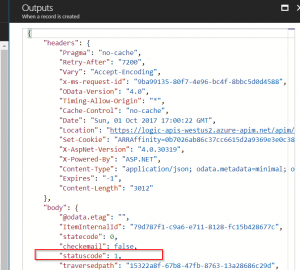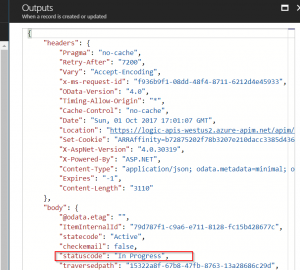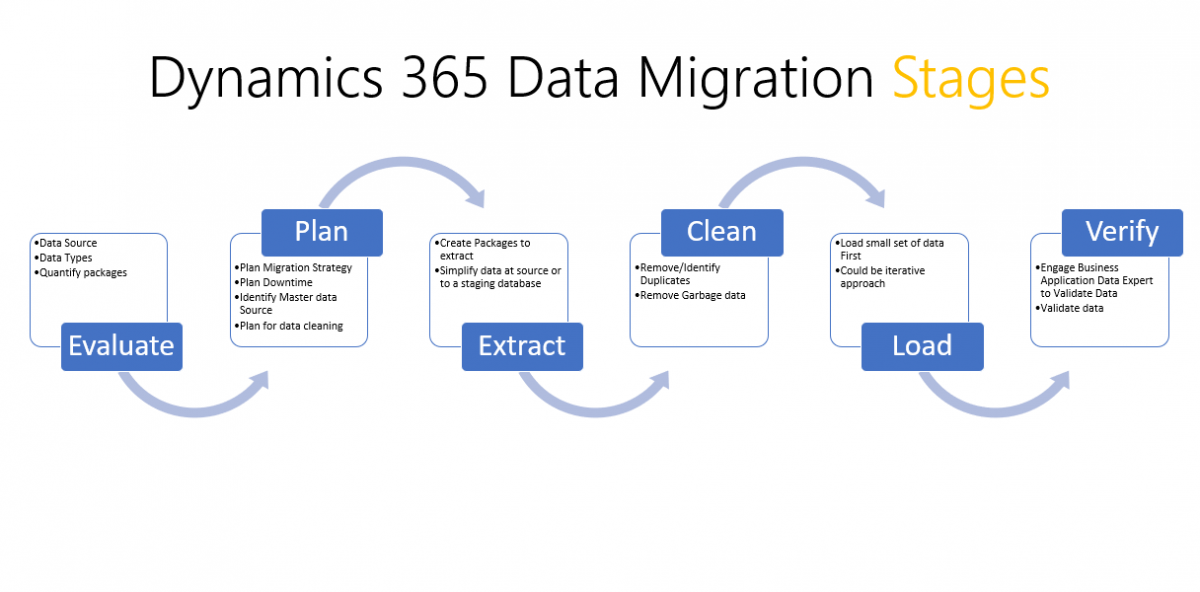Imagine this: you’re in the middle of a crucial project, and someone accidentally makes a customization directly in the production environment, creating an unmanaged layer. Panic sets in as you scramble to mitigate potential issues. This scenario is a nightmare for any Power Platform administrator, but the good news is it can be prevented. By blocking unmanaged customizations, you can ensure that only managed and controlled changes are deployed in your production environment. Here’s a step-by-step guide on how to block unmanaged customizations in Power Platform.
Tag: Microsoft CRM
Dynamics 365 : Data Migration demystified-Part I
Data migration is often overlooked in Project implementation primarily because the project team is focussed on application development and customization which takes away the priority of data integration and data migration. As data migration is planned to be the last activity on the project it also gets most impacted from any budget cuts and application scope increase.
Talking about the budget, many implementation’s approaches to data migration is for data migration to be done using the Import and Export feature of Dynamics 365 CE over the weekend before Go Live, this works sometimes but is a recipe of disaster in most cases.
When implementing Dynamics 365 Project, configuration and customization to meet the users need is only half the battle. Data migration is key to getting the right head start for users to start using the application. In this blog series, I will focus on data migration, the challenges, strategy, Process, Tools and my own learnings over the years. Let’s start with what is Data migration?
Continue reading “Dynamics 365 : Data Migration demystified-Part I”
Microsoft Dynamics 365 Connector for Logic App gets an update
Last week Microsoft released an update for Dynamics 365 Connector for Logic App, there are few long-awaited features in this update which I am excited about.
With this update Microsoft has added support for option sets being exposed as strings in the response, this used to be a challenge earlier as Optionset value and mapping had to be hardcoded in the Logic app or Azure Functions.
the difference in the options set value in the output:


Continue reading “Microsoft Dynamics 365 Connector for Logic App gets an update”
Integration with Microsoft Dynamics 365 using Azure Logic App Service
In this post I’ll discuss Data Integration using Azure Logic App Service, we will create a Logic app that gets triggered when a case is created in Dynamics 365 and inturns creates a work item in Visual Studio Team services for the team to work on.
Logic App workflow is built using series of actions and Connectors, and has its own JSON based workflow definition schema, for details refer to my blog on The Basics of Azure Logic Apps Schema and Codeview editing
Pre-requisites
- Microsoft Dynamics 365 Online instance (On-premise instance could be used as well using Azure Data Gateway)
- Microsoft Azure subscription for creating a Logic APP (If you don’t have an Azure subscription you can either use Try a Logic App feature which creates a logic app for an hour or you may sign up for a Trial account.)
- Visual Studio Team services account (SignUp link).
Continue reading “Integration with Microsoft Dynamics 365 using Azure Logic App Service”
Basics of Azure Logic Apps Schema and Codeview editing
Integrations using Logic App could be a fun exercise. Logic App provides a visual designer to model and automate your workflow process as a series of steps called as workflow designer UI, for complex requirement Code view comes handy. In this blog, I will talk about the structure of logic app definition.
Let’s start with some basic components of Logic App.
-
- Logic App Visual designer actually creates a JSON file with workflow definitions. JSON structure for Logic app
{
"$schema": "",
"contentVersion": "",
"parameters": { },
"triggers": [ { } ],
"actions": [ { } ],
"outputs": { }
}
$Schema, content version and static values and are set to schema and version automatically.
Parameters are important as they help parameterize the logic app and assist with Deployments and change management. I will go more in-depth in my subsequent blog on Logic App and Change management/ALM.
Triggers: define the trigger criteria for the workflow. to access the output of trigger @triggerBody() could be used.
Actions: define the actions within the workflow, actions are nested and using runAfter you may define the dependent action or parallel action flow.
Outputs: refer to the response of the workflow post execution of all the actions. Most of our Integration scenario doesn’t use the output as we will have another action to consume the output.
Continue reading “Basics of Azure Logic Apps Schema and Codeview editing”
Microsoft Dynamics 365 & Integrations
In today’s business, it’s key to have Unified systems and process. Often businesses struggle to integrate enterprise data across their ever-growing number of applications and systems, resulting in applications which are meant to help but actually harm productivity.
Disconnected systems often overload employees with much of the painstaking work of searching data, data entry, data processing, and business analysis, and in some cases, data synchronization is manual and the onus of data integrity across systems will fall to employees.
When businesses invest in digital transformation projects to improve efficiency and gain a competitive edge, they have to plan on how new systems and apps will interact with each other. Burdening their employees with the task of manually migrating data between various systems easily counteracts any ROI.
Almost every Microsoft Dynamics 365 Implementation requires some level of Integration in real or near real time with other systems. At first, Microsoft Dynamics integration may seem like a daunting task but there are a lot of tools by Microsoft and ISV’s which makes it easier, Let’s dive in and look into some of the key options which have almost become industry standards for Dynamics 365 Integrations.


